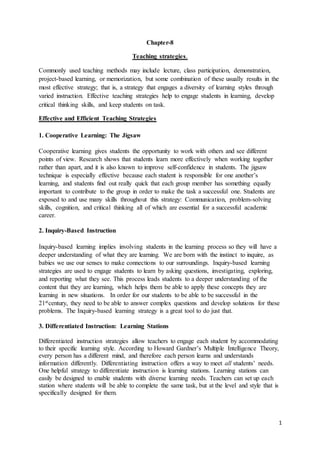The document discusses several teaching strategies and methods including:
1. Cooperative learning strategies like jigsaw that allow students to work together and learn from different perspectives.
2. Inquiry-based instruction that engages students by asking questions to develop a deeper understanding of content.
3. Differentiated instruction using learning stations to accommodate different learning styles.
4. Use of graphic organizers to help students organize and comprehend information visually.
5. Integrating technology into lessons to keep students engaged.
It also discusses newer teaching methods like spaced learning that combines lessons with physical breaks, flexible Fridays focusing on individual subjects, and engagement through real-world experiences outside the classroom. Simulation, team teaching, and their advantages









